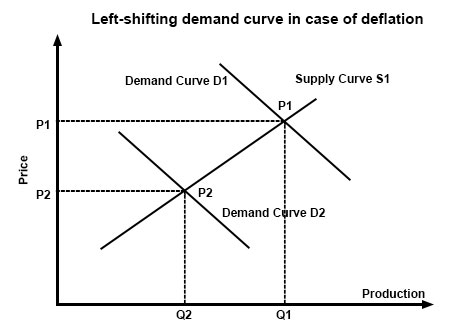Contents:


Instead, it is shown as an asset in the financial leverage sheet of the company. Closing StocksClosing stock or inventory is the amount that a company still has on its hand at the end of a financial period. It may include products getting processed or are produced but not sold. Raw materials, work in progress, and final goods are all included on a broad level. Double entry is an accounting term stating that every financial transaction has equal and opposite effects in at least two different accounts.
- In addition, the adjusted trial balance can be used to identify any errors that may have been made when preparing the financial statements.
- The adjusted trial balance ensures that the total debits and credits in the general ledger are equal after all adjusting entries have been recorded.
- While you can create an adjusting trial balance manually, or by using spreadsheet software, it’s far easier to do so when using accounting software.
- Depreciation enables companies to generate revenue from their assets while only charging a fraction of the cost of the asset in use each year.
We are using the same posting accounts as we did for the unadjusted trial balance just adding on. Notice how we start with the unadjusted trial balance in each account and add any debits on the left and any credits on the right. Once all ledger accounts and their balances are recorded, the debit and credit columns on the adjusted trial balance are totaled to see if the figures in each column match. The final total in the debit column must be the same dollar amount that is determined in the final credit column. The orange section is for the accounts that will be used on the balance sheet, the blue is the statement of retained earnings and the green is the income statement.
Format and methods of preparing adjusted trial balance
Notice the net income of $4,665 from the income statement is carried over to the statement of retained earnings. Dividends are taken away from the sum of beginning retained earnings and net income to get the ending retained earnings balance of $4,565 for January. This ending retained earnings balance is transferred to the balance sheet.
- Accrued RevenueAccrued revenues are the company’s revenue in the normal course of business after selling the goods or providing services to a third party.
- Here we’ll go over what exactly this miraculous document is, how to create one, and why it’s such an important part of accounting.
- Sage 50cloudaccounting offers three plans; Pro, which is $278.98 annually, Premium, which runs $431.95 annually, and Quantum, with pricing available from Sage.
- You can ensure that the entries have posted correctly by comparing the initial trial balance totals with the adjusted trial balance totals.
- The key difference between a trial balance and a balance sheet is one of scope.
So you know the textbook definition of the adjusted trial balance, but what is it in layman’s terms, and how do you create one? Well, let me start by taking a step back in the accounting process and talking about the trial balance. One or more of the individual ledger account balances have not been listed in the trial balance report. Sage 50cloudaccounting offers both a summary and detailed trial balance report, along with a comparative trial balance that allows you to compare trial balance totals for two periods. There are also net changes for the period trial balance report that provides a good view of all changes made during an accounting period. Using Paul’sunadjusted trial balanceand hisadjusted journal entries, we can prepare the adjusted trial balance.
Balance Sheet
Well, the purpose of preparing an adjusted trial balance is to ensure that the financial statements for the period are accurate and up-to-date. It corrects any errors to make the statements compatible with the requirements of an applicable accounting framework. You can use the report to analyze end-of-period performance and it is often applied when creating closing entries, which are journal entries to transfer temporary accounts to permanent accounts. An unadjusted trial balance is a list of all the general ledger balances without making any adjustment entries.

It ensures accurate reporting of the nominal ledgers for use in financial reporting of business performance. The essence of the adjusted trial balance is the year-end adjusting entries. These entries convert the unadjusted trial to the adjusted version.
Take a couple of minutes and fill in the income statement and balance sheet columns. To get the numbers in these columns, you take the number in the trial balance column and add or subtract any number found in the adjustment column. There is no adjustment in the adjustment columns, so the Cash balance from the unadjusted balance column is transferred over to the adjusted trial balance columns at $24,800. Interest Receivable did not exist in the trial balance information, so the balance in the adjustment column of $140 is transferred over to the adjusted trial balance column.
What is Trial Balance Example?
DebitCreditCash10,000Accounts Receivable25,000Interest Receivable600Supplies1,500Prepaid Insurance2,200Trucks40,000Accum. The account method is the simpler of the two methods and involves adding the adjustment amounts to the appropriate accounts in the ledger. The equation method uses a formula to calculate the adjusted trial balance. In simple words, adjusting a trial balance means that the account balances in the trial balance are updated to reflect the changes that have been made as a result of the adjusting entries. Operations in house or outsourcing a professional accountant.
For depreciation, depreciation expense increased, while accumulated depreciation increased as well. The adjustments need to be made in the trial balance for the above details. DebitDebit represents either an increase in a company’s expenses or a decline in its revenue. Interest PayableInterest Payable is the amount of expense that has been incurred but not yet paid.

The next step is to record information in the adjusted trial balance columns. The adjustments total of $2,415 balances in the debit and credit columns. To understand what an adjusted trial balance is, we first have to view an unadjusted trial balance as well as the necessary journal entries to complete in order to prepare an adjusted trial balance. Designed to provide the information needed to create closing entries, we’ll guide you through the steps of creating an adjusted trial balance.
The software automatically updates/adjusts the relevant https://1investing.in/ accounts and generates financial statements for the use of various stakeholders. Is an all-in-one spreadsheet showing the transition of account information from the trial balance through the financial statements. Accountants use the 10-column worksheet to help calculate end-of-period adjustments. Using a 10-column worksheet is an optional step companies may use in their accounting process. Is the third statement prepared after the statement of retained earnings and lists what the organization owns , what it owes , and what the shareholders control on a specific date. Remember that the balance sheet represents the accounting equation, where assets equal liabilities plus stockholders’ equity.
The trial balance is a list of all your business’ ledger accounts, and how much each of those accounts changed over a particular period of time. You may have also heard it referred to as a trial balance sheet as it should be one worksheet summarizing all of your activity for a certain period in time. Usually, companies prepare the trial balance at the end of each fiscal period.
The key difference between a trial balance and a balance sheet is one of scope. A balance sheet records not only the closing balances of accounts within a company but also the assets, liabilities, and equity of the company. It is usually released to the public, rather than just being used internally, and requires the signature of an auditor to be regarded as trustworthy. In this trial balance, adjustments are made to initial balance to all the required accounts. Adjustments are made to an initial trial balance to bring the financial statements into compliance with GAAP or IFRS .

If you’re doing your accounting by hand, the trial balance is the keystone of your accounting operation. All of your raw financial information flows into it, and useful financial information flows out of it. At some point, you’ll want to make sense of all those financial transactions you’ve recorded in your ledger.
Unearned revenue had a credit balance of $4,000 in the trial balance column, and a debit adjustment of $600 in the adjustment column. Remember that adding debits and credits is like adding positive and negative numbers. This means the $600 debit is subtracted from the $4,000 credit to get a credit balance of $3,400 that is translated to the adjusted trial balance column. The statement of retained earnings always leads with beginning retained earnings. Beginning retained earnings carry over from the previous period’s ending retained earnings balance. Since this is the first month of business for Printing Plus, there is no beginning retained earnings balance.
You have the dividends balance of $100 and net income of $4,665. If you combine these two individual numbers ($4,665 – $100), you will have your updated retained earnings balance of $4,565, as seen on the statement of retained earnings. In this case we added a debit of $4,665 to the income statement column.
What Is the Sequence for Preparing Financial Statements? – Chron
What Is the Sequence for Preparing Financial Statements?.
Posted: Thu, 14 Jul 2016 05:42:20 GMT [source]
General AccountGeneral Account is a deposit account where an insurance company puts all its premiums collected from the policies it underwrites. This is used to fund the company’s operating expenses and the payment of several insurance claims & benefits. Hence, the trial balance includes all considerable adjustments, which is termed as adjustment trial balance.
Accounting Cycle Definition: Timing and How It Works – Investopedia
Accounting Cycle Definition: Timing and How It Works.
Posted: Sun, 06 Mar 2022 08:00:00 GMT [source]
What would the debit or credit to the direct material efficiency variance account be for the current… Concepts Statements give the Financial Accounting Standards Board a guide to creating accounting principles and consider the limitations of financial statement reporting. Closing entries are completed after the adjusted trial balance is completed. DepreciationDepreciation is a systematic allocation method used to account for the costs of any physical or tangible asset throughout its useful life.
If your cash is positive, it will go on the the debit side because that’s our normal side and that’s also the side that has the larger sum of the debits. Provide the web link to the company’s Form 10-K, to allow accurate verification of your answers. Review the company’s end-of-period Balance Sheet, Income Statement, and Statement of Retained Earnings.
The accounting cycle records and analyzes accounting events related to a company’s activities. A trial balance is so called because it provides a test of a fundamental aspect of a set of books, but is not a full audit of them. If the total of both sides is the same, the trial balance is mathematically correct. In case the same is not tallied, look for errors and reasons and correct the same. Journal Entry for Direct Materials Variance In the current year, Mission Burrito budgeted 6,000 pounds of production and actually used 4,000 pounds. Material cost was budgeted for $5 per pound and the actual cost was $8 per pound.
